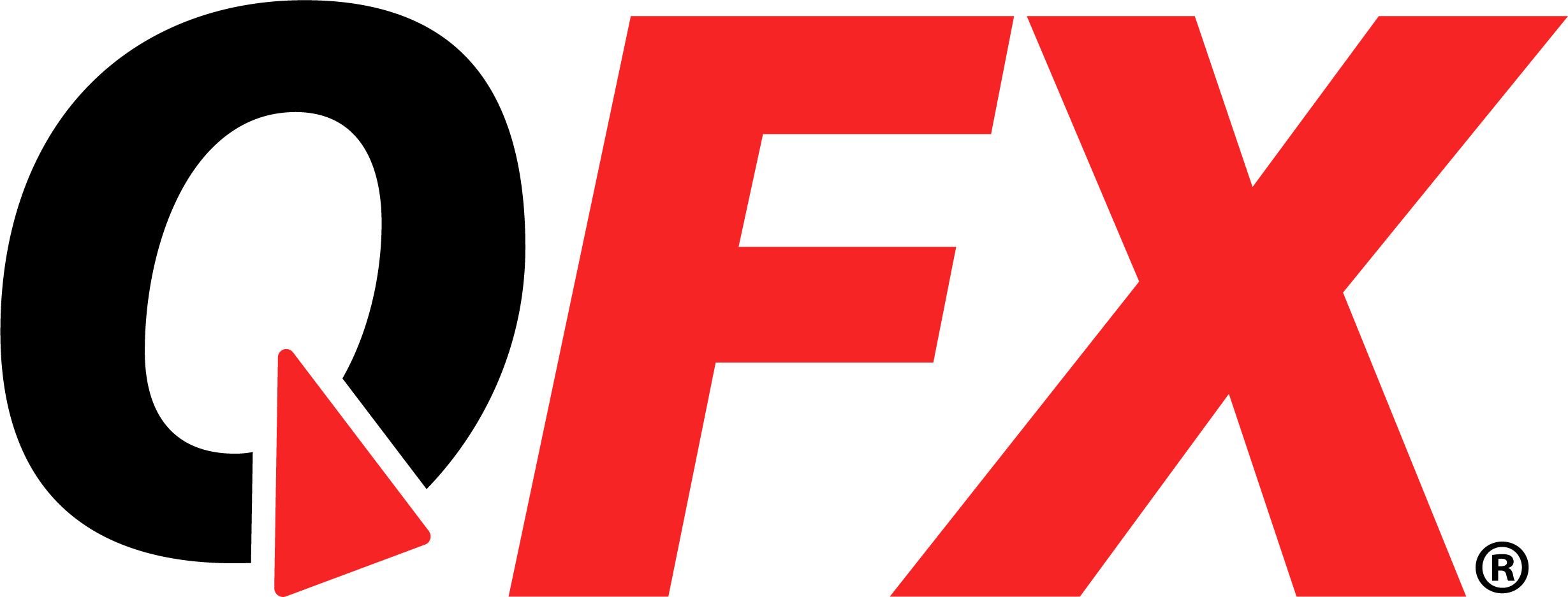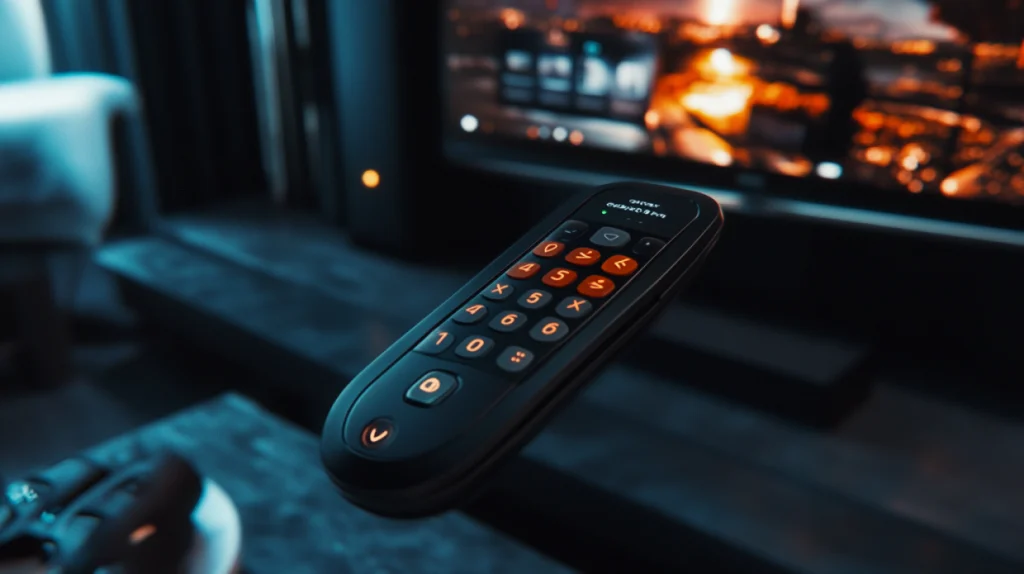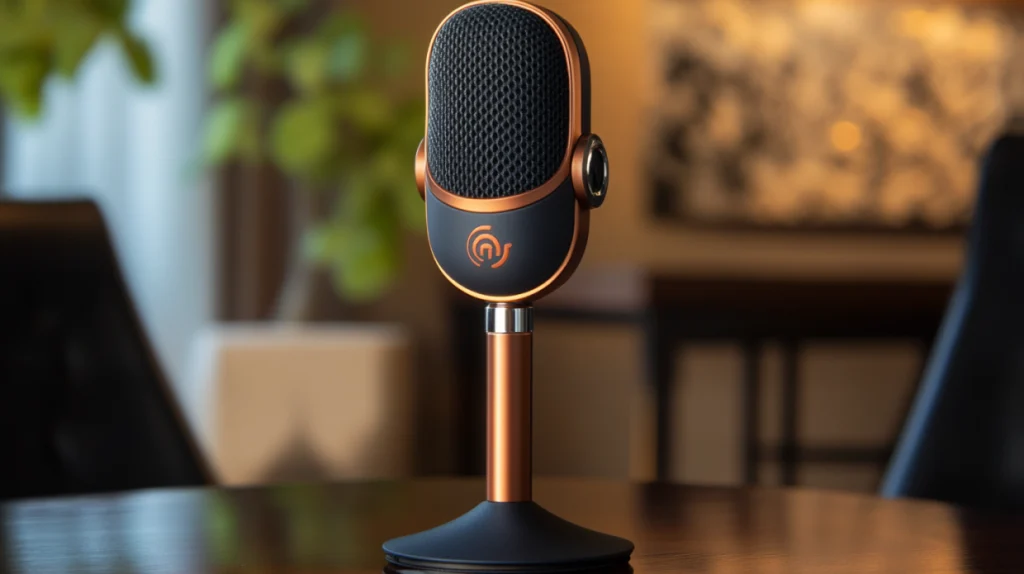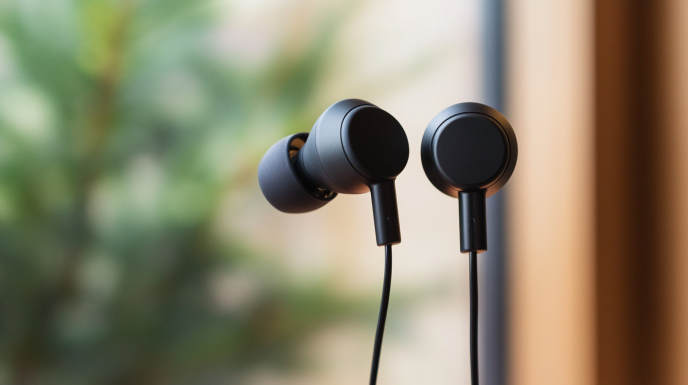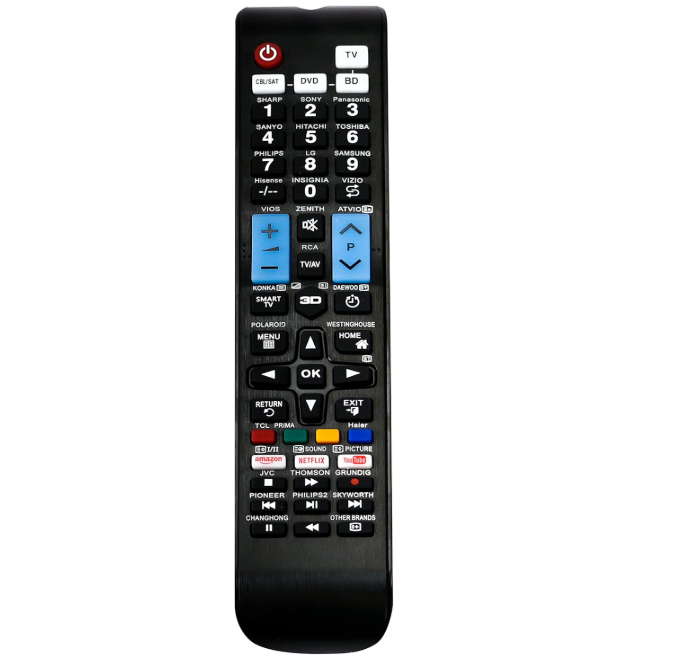
QFX REM-10 Universal 4 in Smart TV Remote Control Sony, Philips, Samsung, LG, Panasonic, Toshiba, & Many More Plus 3D TVs Featuring Video, Netflix, YouTube Buttons
- Total Control: With the REM-10 you now have the power to control TV, 3DTV, HDTV, DVD, and Blue-Ray. Compatible with most TV and A/V devices
- Seamless Setup: Once connected, the REM-10 offers fast and simple device pairing. Refer to the included manual for directions. Compatible with most major brands Refer to manual for complete list
Navigating the World of Audio Control in the Palm of Your Hand
In the ever-evolving landscape of home entertainment, few things can be as frustrating as losing control—quite literally. That small, seemingly insignificant device that commands your speakers, sound systems, and entertainment setups holds tremendous power, and when your QFX remote goes missing or malfunctions, it can feel like you’ve lost the magic wand to your audio kingdom.
Whether you’re a longtime QFX device owner or you’ve recently joined the club, understanding the ins and outs of your QFX remote can save you hours of frustration and enhance your overall experience. From pairing and programming to troubleshooting and replacement options, this comprehensive guide will walk you through everything you need to know about QFX remotes.
So sit back, turn up the volume (if your remote is working, that is), and let’s dive into the world of QFX remotes—the unsung heroes of your entertainment setup.
Where to Find Your Perfect QFX Remote Match
Finding the right QFX remote for your device shouldn’t feel like searching for a needle in a haystack. Yet many users find themselves in exactly this predicament when their original remote decides to take an unscheduled permanent vacation.
The first and most obvious place to look for a replacement QFX remote is directly from the source. QFX’s official website offers replacement remotes for many of their models, though availability can sometimes be spotty depending on how recent or popular your device model is. Their customer service line can also help you locate the exact remote you need if you provide them with your model number.
Major electronics retailers like Best Buy, Walmart, and Target often carry QFX products and their accessories, including remotes. While brick-and-mortar stores might have limited inventory, their online counterparts typically offer a wider selection. Amazon has become a particularly reliable source for QFX remotes, with both official replacements and third-party alternatives available at competitive prices.
For those who prefer the treasure hunt of secondhand shopping, platforms like eBay and Facebook Marketplace occasionally feature QFX remotes at discounted prices. Just be sure to verify compatibility with your specific model before purchasing.
If you’re in a pinch and need a temporary solution, many electronics stores carry universal remotes that can be programmed to work with QFX devices. While these might not offer all the specialized functions of the original remote, they can handle basic operations until you secure an exact replacement.
Local electronics repair shops sometimes stock common remote models or can order one for you. These establishments can also offer personalized advice on compatibility and programming—a human touch that online shopping can’t match.
When ordering online, always double-check the model compatibility to ensure you’re getting the right remote for your device. A remote designed for a QFX sound bar won’t necessarily work with a QFX portable speaker, even if they share the QFX branding.
The Art of Pairing: Connecting Your QFX Remote to Your Speaker
Pairing your QFX remote with your speaker system is like introducing two friends who should get along swimmingly but somehow need your help to make the connection. While the specific pairing process varies slightly between different QFX models, the general approach follows a similar pattern.
Most QFX speakers enter pairing mode when you press and hold the power button for 3-5 seconds. You’ll typically see a blinking light (often blue or red) indicating that the device is ready to connect. On the remote, the pairing process usually involves pressing a designated pairing button or a specific combination of buttons (commonly the play and stop buttons simultaneously).
For newer QFX models with Bluetooth capability, the remote pairing process might involve engaging the Bluetooth function on the speaker first, then initiating a scan from the remote. The speaker’s display or indicator lights will confirm when pairing is successful.
If you’re struggling with the pairing process, distance could be the culprit. During pairing, keep the remote within 3-6 feet of the speaker for optimal signal connection. Remove any obstacles between the remote and the device that might interfere with the signal.
Certain environmental factors can impact pairing success. Strong Wi-Fi networks, microwave ovens, and other devices emitting radio frequencies might interfere with the pairing process. If you’re having trouble, try moving to a different location or temporarily disabling nearby electronic devices.
Battery level matters more than you might think. A remote with weak batteries might initiate the pairing process but fail to complete it. If you’re having persistent pairing problems, try replacing the batteries before assuming there’s a more complex issue.
Some QFX models have a factory reset option that can clear previous pairing data and solve connection issues. Check your user manual for the specific button combination that triggers a reset on your model.
Remember that patience is key—the pairing process typically takes 10-30 seconds to complete, and rushing through the steps or pressing buttons repeatedly can actually interfere with successful connection.
Compatibility Concerns: Does One Size Fit All?
The million-dollar question many QFX owners face: “Will this remote work with my device?” Unfortunately, the answer isn’t always straightforward. QFX has produced numerous audio products over the years, from portable Bluetooth speakers to complex home theater systems, and remote compatibility varies widely across the product line.
As a general rule, QFX remotes are designed to work specifically with the model they were packaged with, plus a limited range of closely related models. The remote for a QFX PBX speaker, for example, won’t necessarily work with a QFX soundbar.
QFX typically organizes their products into series or families, and remotes often maintain compatibility within these groupings. If you own multiple QFX devices from the same product line, there’s a good chance one remote can control them all—though you might need to switch between device modes using a dedicated button on the remote.
For newer models released in the past few years, QFX has been working toward greater cross-compatibility, particularly for their Bluetooth-enabled devices. These newer remotes often feature more universal protocols that can communicate with a wider range of QFX products.
Legacy models present a particular challenge. If you own an older QFX device (5+ years), finding a compatible remote—particularly a universal one—may require extra research. The infrared (IR) codes used by older models sometimes differ significantly from current standards.
The most reliable way to determine compatibility is to check the model number of both your device and the remote you’re considering. QFX customer service can provide definitive information about which remote models will work with your specific device.
When shopping for a replacement, look for remotes explicitly listed as compatible with your model number. Vague descriptions like “works with most QFX speakers” should be approached with caution unless accompanied by a specific compatibility list.
Battery Matters: Keeping Your QFX Remote Powered Up
Few things are more frustrating than pressing buttons on your remote with increasing force, only to realize it’s not you—it’s dead batteries. Replacing batteries in your QFX remote is typically straightforward, but the process varies slightly depending on your remote model.
Most QFX remotes use AAA batteries, though some compact models might use button cell batteries like CR2025 or CR2032. The battery compartment is typically located on the back of the remote and can be accessed by sliding the cover in the direction indicated by arrows on the casing.
When replacing batteries, always install them according to the polarity markings (+ and -) inside the battery compartment. Incorrect installation won’t damage most modern remotes but will prevent them from functioning.
Battery life for QFX remotes varies widely depending on usage patterns and the specific model. Heavy users might need to replace batteries every 2-3 months, while occasional users might go 6-12 months between changes. If you notice decreased range or responsiveness, it’s usually a sign that the batteries are weakening.
Quality matters when it comes to batteries for your remote. While budget alkaline batteries will work, they typically don’t last as long as premium brands. For frequent users, investing in rechargeable NiMH batteries might save money and reduce waste in the long run.
Some QFX remote issues that seem like hardware failures are actually just battery connection problems. If your remote stops working suddenly, try removing the batteries, cleaning the contact points with a dry cloth, and reinserting them before seeking a replacement.
Environmental factors affect battery life too. Remotes left in very cold environments may experience temporary battery weakness even when the batteries are relatively new. Bringing the remote to room temperature typically restores normal function.
When storing your QFX remote for extended periods, consider removing the batteries to prevent potential leakage that could damage the internal components.
Universal Remote Options: When Original Isn’t an Option
When the original QFX remote is nowhere to be found and a direct replacement isn’t readily available, universal remotes present a viable alternative. But can they really replace all the functionality of your original QFX remote?
Universal remotes vary dramatically in their capabilities and price points. Basic models priced under $20 typically offer fundamental functions like power, volume, and input selection, but may lack specialized features unique to QFX devices. Premium universal remotes from brands like Logitech Harmony can replicate nearly all functions of your original remote, but come with a correspondingly higher price tag.
Programming a universal remote to work with your QFX device typically follows one of three methods: direct code entry, code search, or learning from your original remote (if you still have it but it’s damaged). The most reliable method varies depending on the universal remote brand and your specific QFX model.
For direct code entry, you’ll need the setup codes for QFX devices, which should be listed in the universal remote’s manual or on the manufacturer’s website. If your specific QFX model isn’t listed, try codes for other QFX devices or even codes for similar brands like Jensen or Naxa, which sometimes use compatible protocols.
The code search method involves putting your universal remote in search mode and cycling through available codes until you find one that operates your QFX device. This can be time-consuming but is often successful when direct codes aren’t available.
Many mid-range and premium universal remotes offer a learning function, where you point your original remote at the universal remote to teach it the correct commands. This works even if the universal remote doesn’t have pre-programmed QFX codes in its database.
Smart universal remotes controlled through smartphone apps like the Broadlink RM4 are gaining popularity and offer excellent compatibility with QFX devices. These use your phone as the interface and an IR blaster to control your equipment, typically offering extensive customization options.
Remember that while universal remotes can replicate basic functions, specialized features like direct access to EQ settings, specific sound modes, or Bluetooth pairing functions might not be available without the original QFX remote.
Troubleshooting: When Your QFX Remote Stops Taking Orders
Even the most reliable remotes occasionally develop issues. Before tossing your QFX remote into the junk drawer and ordering a replacement, try these troubleshooting steps to potentially revive it.
The most common issue—and easiest to fix—is battery depletion. Even if you recently replaced the batteries, try a fresh set from a different package to rule out defective batteries. Also check that the batteries are properly seated and making good contact with the terminals.
Physical damage isn’t always visible. If your remote has been dropped, sat on, or otherwise potentially damaged, internal connections may be compromised. Try gently flexing the remote body to see if intermittent connections can be temporarily restored—if this works, it confirms an internal physical issue.
The IR emitter (the dark plastic “eye” at the front of most remotes) can become obscured by dust or debris. Clean it gently with a soft cloth and ensure nothing is blocking the signal when you use the remote.
Distance and angle matter more than many users realize. Most QFX remotes have an optimal operating range of 15-30 feet, and the signal needs a relatively direct path to the receiver on your device. Try using the remote from different positions and angles if you’re experiencing intermittent response issues.
Interference from other devices can impact remote performance. LED and CFL light bulbs, in particular, can emit infrared light that confuses remote sensors. Try turning off nearby lights or relocating your QFX device away from such light sources.
Some QFX remotes can be reset by removing the batteries, pressing and holding the power button for 10 seconds (which discharges any residual power in the circuits), then reinstalling fresh batteries. This sometimes resolves electronic glitches causing unresponsive buttons.
If specific buttons aren’t working, the conductive pads underneath them may be worn or dirty. Advanced users might try opening the remote (typically secured with small screws) and cleaning the contact surfaces with isopropyl alcohol on a cotton swab. This should be attempted only as a last resort before replacement.
For Bluetooth remotes, interference from other wireless devices can cause connectivity issues. Try resetting both the remote and your QFX device, then re-pairing them in an environment with minimal wireless traffic.
Replacement Options: Finding a New Command Center
When troubleshooting fails and it’s clear your QFX remote has reached the end of its useful life, finding a suitable replacement becomes the priority. Fortunately, several avenues exist for securing a new command center for your audio system.
Direct replacements from QFX offer the most seamless experience. Contact QFX customer service with your device model number to order the exact remote designed for your equipment. This approach ensures full functionality and minimal setup hassle, though it might cost more than third-party alternatives.
Authorized QFX retailers like Best Buy, Amazon, and Walmart sometimes stock common replacement remotes. Check their websites using your specific model number to see if compatible remotes are available for immediate purchase.
Third-party manufacturers produce compatible remotes for popular QFX models. These typically cost less than official replacements but may vary in build quality and feature completeness. Read user reviews carefully before purchasing to ensure others have successfully used the remote with your specific QFX model.
For older QFX models where exact replacements are no longer manufactured, aftermarket options from companies specializing in replacement remotes (like Replacement Remotes or Remote Controls Express) often offer suitable alternatives. These companies maintain extensive databases of remote codes and can frequently provide compatible options for discontinued models.
If you’re technically inclined, programmable remote apps for smartphones present a modern alternative. Apps like “IR Universal Remote” or “ASmart Remote IR” turn phones with built-in IR blasters into customizable remotes. Unfortunately, this option is becoming less viable as fewer smartphone manufacturers include IR hardware in their devices.
For QFX devices with Bluetooth capability, proprietary QFX smartphone apps sometimes offer remote control functionality without needing the physical remote. Check the QFX website or app stores to see if your model has companion app support.
Consider future-proofing your setup when replacing your remote. If you own multiple QFX devices or plan to expand your collection, investing in a higher-end universal remote might be more economical than replacing individual remotes as they fail.
Programming Perfection: Setting Up Your QFX Remote
Whether you’re configuring a new replacement remote or setting up a universal remote to work with your QFX device, the programming process requires attention to detail and sometimes a bit of patience.
For original QFX replacement remotes, the programming requirements are typically minimal. Most will work immediately after installing batteries, though some models may require a simple pairing process similar to the one described in the pairing section above.
If your replacement remote doesn’t connect automatically, look for a pairing or setup button—usually identified in the user manual. The pairing process typically involves pressing this button while the QFX device is powered on, then waiting for indicator lights to confirm successful connection.
For universal remotes, the programming process varies by manufacturer but generally follows one of the methods outlined in the universal remote section: direct code entry, code search, or learning mode. The universal remote’s instruction manual should provide specific guidance for programming QFX devices.
Some newer QFX models support remote programming through the device itself. Look for a remote setup option in the device’s menu system, which may guide you through the process of connecting to a new or replacement remote.
After basic programming, test all functions to ensure proper operation. Pay particular attention to specialized features like EQ adjustments, sound field settings, or input selection options, as these are most likely to require additional programming steps.
If you’re using a smart home system like Amazon Alexa or Google Home, some QFX devices support integration that allows voice control to supplement or replace remote functions. Check the QFX website for compatibility information and setup instructions.
Keep your remote’s programming instructions in a safe place—perhaps taped to the inside of the battery compartment or stored with your device manual. This small step can save significant frustration if you need to reprogram after a battery change or system reset.
Compatibility Chronicles: What Works With What?
The QFX ecosystem encompasses a wide range of audio products, from portable Bluetooth speakers to comprehensive home theater systems. Understanding which remotes work with which devices helps prevent purchasing mistakes and frustration.
QFX typically designs their remotes to work with specific product families rather than their entire product line. A remote designed for the PBX series of party speakers, for example, likely won’t work with a J series home stereo system.
The most reliable indicator of compatibility is the model number. QFX remotes usually have model numbers that correspond to the devices they control. A remote with model number RC-PBX1000, for instance, is designed primarily for the PBX1000 speaker but might work with the PBX900 or PBX1100 as well.
Age matters in compatibility considerations. Newer QFX remotes (manufactured in the last 3-5 years) tend to use more standardized protocols and might work across a broader range of contemporary devices. Remotes for legacy equipment often use proprietary codes that don’t translate to modern models.
Checking the QFX website for compatibility information before purchase can save significant hassle. Their product pages typically list compatible accessories, including appropriate replacement remotes.
Some QFX devices support multiple remote types. For example, a Bluetooth-enabled speaker might work with both a standard IR remote and a Bluetooth remote, with each offering slightly different functionality or operating range.
When purchasing used QFX equipment, ask the seller to include the original remote if possible. This eliminates compatibility questions and ensures you have access to all the device’s features.
If you’re building a mixed-brand entertainment system, consider how remote compatibility will affect your setup. Some universal remotes designed for major brands like Samsung or Sony might have limited functionality with QFX devices.
Bluetooth Capabilities: Cutting the Invisible Cord
As technology evolves, so do remote control capabilities. Many newer QFX models incorporate Bluetooth functionality into their remotes, offering advantages over traditional infrared (IR) technology.
Bluetooth remotes don’t require line-of-sight to function, allowing you to control your QFX device even when it’s positioned behind cabinet doors or in another part of the room. This flexibility can be particularly valuable in complex entertainment setups where direct visibility is challenging.
The pairing process for Bluetooth remotes differs from IR models. Typically, you’ll need to put the remote in pairing mode (often by pressing and holding a dedicated pairing button), then activate Bluetooth discovery on your QFX device. Once paired, the connection is usually maintained even after power cycles.
Range represents a significant advantage for Bluetooth remotes, which can typically operate from 30 feet or more away from the controlled device. IR remotes, by contrast, usually max out at about 15-20 feet under ideal conditions.
Battery life considerations differ between technologies. Bluetooth remotes actively maintain their connection to the device, which can result in faster battery depletion compared to IR remotes that only use power when buttons are pressed.
Not all QFX devices support Bluetooth remotes, even if they have Bluetooth capability for audio streaming. Check your device specifications or manual to confirm remote control Bluetooth support before purchasing a Bluetooth remote.
Some QFX models offer dual-technology remotes that incorporate both IR and Bluetooth capabilities. These hybrid remotes provide maximum flexibility but may cost more than single-technology alternatives.
Security represents an often-overlooked advantage of Bluetooth remotes. While IR signals can potentially be captured and replicated by sophisticated equipment, Bluetooth connections employ encryption that makes remote cloning much more difficult.
App Control: When Your Phone Becomes Your Remote
In our smartphone-centric world, dedicated physical remotes are increasingly being supplemented or replaced by mobile applications. QFX has embraced this trend with companion apps for many of their newer models.
The QFX Audio app, available for both iOS and Android, offers remote control functionality for compatible QFX devices. This app connects via Bluetooth and provides access to basic controls like volume, track selection, and power, plus advanced features such as equalizer settings and sound field customization.
Using app-based control offers several advantages over physical remotes. The interface can be updated with new features without replacing hardware, the touchscreen allows for more intuitive control of complex functions, and your phone is less likely to disappear between couch cushions than a small remote.
Not all QFX devices support app control. Generally, models with built-in Bluetooth capability manufactured within the last 3-4 years are most likely to offer app compatibility. Check the QFX website for your specific model to confirm app support.
Setup typically involves downloading the appropriate app, enabling Bluetooth on your phone, and following the in-app pairing instructions. Some QFX devices may require a firmware update to enable app control functionality.
Third-party universal remote apps sometimes support QFX devices even when no official app exists. Apps like “SURE Universal Remote” maintain databases of IR codes for various brands, including QFX, and can turn phones with built-in IR blasters into universal remotes.
Battery consumption on your smartphone increases when using it as a remote control, especially if the app maintains an active Bluetooth connection in the background. Consider this impact on your phone’s battery life when deciding between app control and dedicated remote options.
For households with multiple users, app-based control can be more convenient than sharing a single physical remote. Everyone can install the app on their own device, eliminating the eternal question, “Where’s the remote?”
Reset and Refresh: When Your QFX Remote Needs a Do-Over
Even well-maintained QFX remotes occasionally develop electronic hiccups that affect their performance. Knowing how to properly reset your remote can often resolve these issues without replacement.
The simplest reset method involves removing the batteries, waiting approximately 30 seconds, then reinstalling them. This power cycle clears temporary memory and often resolves minor glitches in the remote’s operation.
For more persistent issues, many QFX remotes support a factory reset function. The specific button combination varies by model but typically involves pressing and holding multiple buttons simultaneously for 5-10 seconds. Common combinations include “Power + Volume Down” or “Menu + 0.”
If your QFX remote uses Bluetooth connectivity, resetting the pairing information can resolve connection problems. This usually involves a specific button sequence followed by repeating the initial pairing process with your device.
Some QFX remote issues aren’t actually remote problems at all, but rather issues with the receiving device. Try resetting your QFX speaker or audio system by unplugging it from power for 30 seconds, then reconnecting and attempting to use the remote again.
After performing any reset, test all functions of the remote systematically. Start with power control, then volume and basic navigation, and finally test specialized functions like EQ settings or special modes.
For models that store user preferences or presets in the remote itself (rather than in the audio device), be aware that a factory reset will erase these settings. Document any custom configurations before resetting so you can easily restore them afterward.
If multiple reset attempts fail to resolve the issue, the problem may be hardware-related rather than a software glitch. At this point, replacement becomes the more practical solution.
Custom Remote Options: Tailoring Control to Your Needs
For enthusiasts seeking a personalized control experience, custom remote options for QFX devices offer intriguing possibilities beyond standard replacements.
Several third-party manufacturers offer customizable universal remotes that can be programmed for QFX devices. Models like the Logitech Harmony allow you to design custom button layouts, create macros for complex command sequences, and integrate your QFX control with other entertainment devices.
For those comfortable with technology, Arduino-based DIY remote projects provide the ultimate in customization. With appropriate IR libraries and hardware, you can build a remote specifically tailored to your QFX device and personal preferences.
Some custom remote services can replicate discontinued QFX remotes with enhanced functionality. These companies use original remote codes but implement them in hardware with improved range, durability, or ergonomics.
Voice control represents an increasingly popular custom remote option. By integrating your QFX device with smart home systems like Amazon Echo or Google Home (where supported), you can control basic functions through voice commands without any physical remote.
For multi-room audio setups with multiple QFX devices, custom remote solutions that allow zone control from a single interface offer significant convenience advantages over using separate remotes for each device.
When considering custom options, balance the potential benefits against complexity and cost. While a fully customized solution might offer the perfect control experience, the investment in time and money might outweigh the advantages for casual users.
Finding Documentation: Manuals for the Manual-less
One of the most common challenges QFX device owners face is locating instruction manuals for their remotes, especially for older models or secondhand purchases. Fortunately, several resources exist to fill this documentation gap.
The QFX website maintains a library of user manuals for current and many discontinued products. Navigate to the support section and search by model number to locate PDF versions of original documentation.
If your specific manual isn’t available on the official site, third-party manual repositories like ManualsLib or Manual Owl often have comprehensive collections of QFX documentation archived for public access.
For extremely rare or vintage QFX products, online forums dedicated to audio equipment can be valuable resources. Sites like AVSForum or AudioKarma often have communities of enthusiasts who maintain private collections of manuals and may be willing to share them.
When all else fails, contacting QFX customer support directly can sometimes yield results. Their service team may have access to internal archives of discontinued product documentation not published on their website.
If you purchase a universal remote to replace your QFX remote, the programming codes for QFX devices are typically included in the universal remote’s manual or accompanying documentation.
Consider creating a digital archive of your QFX manuals. Scanning physical manuals or downloading digital versions ensures you’ll have access to crucial information even if the original documentation becomes damaged or lost.
Range and Technology: Understanding the Invisible Leash
The effective operating distance of your QFX remote depends on several factors, including the underlying technology it uses to communicate with your device.
Traditional infrared (IR) QFX remotes typically have a practical range of 15-25 feet under ideal conditions. This range assumes a clear line of sight between the remote and the device’s IR receiver, with no obstructions or interference.
Bluetooth-enabled QFX remotes offer significantly improved range capabilities, typically functioning reliably at distances of 30-50 feet. More importantly, Bluetooth doesn’t require direct line of sight, allowing control through walls and cabinet doors.
Physical obstacles dramatically impact IR remote performance. Walls, furniture, and even people standing between the remote and receiver can block the infrared signal entirely. Glass cabinet doors typically allow IR signals to pass, though tinted or UV-protected glass may reduce effectiveness.
Environmental factors affect remote range as well. Strong sunlight containing infrared radiation can overwhelm IR receivers, making remotes less responsive when used in bright, naturally lit rooms. Similarly, some energy-efficient lighting emits infrared frequencies that can interfere with remote operation.
Radio frequency (RF) remotes, available for some higher-end QFX models, offer the best range performance—often 50-100 feet, even through multiple walls. These remotes are less common in the QFX lineup but provide superior flexibility for complex installations.
The remote’s battery condition significantly impacts its transmission power. As batteries deplete, the effective range gradually decreases—often one of the first indicators that battery replacement is needed.
For installations requiring extended range beyond what standard remotes provide, IR repeater systems can capture and retransmit remote signals to equipment located in closets or adjacent rooms. These systems typically consist of an IR receiver placed in the user area and IR emitters positioned near the controlled devices.
Multi-Device Control: One Remote to Rule Them All
For enthusiasts with multiple QFX products in their audio arsenal, managing a collection of individual remotes quickly becomes cumbersome. Fortunately, several approaches exist for consolidating control.
Some higher-end QFX remotes are designed with multi-device capability built in. These remotes typically feature a device selection button or buttons that switch between control modes for different equipment. Check your remote for buttons labeled “AUX,” “TV,” “DVD,” or similar device indicators.
Universal remotes programmed with QFX codes offer another path to simplified control. Depending on the universal remote’s capabilities, you might be able to control not just multiple QFX devices but also televisions, streaming devices, and other entertainment equipment from a single handset.
For QFX devices with Bluetooth capabilities, the QFX Audio app can often control multiple compatible devices. The app typically allows you to switch between registered devices through a device selection menu.
Some QFX home theater systems and speaker arrays are designed as unified ecosystems with a single remote controlling multiple components. These integrated systems offer the simplest multi-device experience, though at the cost of being locked into a single product family.
When utilizing multi-device control, clear device identification becomes important. Consider labeling your equipment with small stickers indicating device numbers or names that correspond to your remote’s device selection system.
If you frequently use multiple QFX devices simultaneously (such as speakers in different rooms), consider a home automation system that can group devices and control them collectively. Systems like Harmony Hub or smart home platforms can create scenes that adjust multiple devices with a single command.
Final Thoughts: The Future of QFX Control
As we look toward the horizon of audio control technology, several trends are reshaping how we interact with our QFX devices and what we can expect from future remote offerings.
Voice control integration continues to expand across the QFX product line. Newer models increasingly support Amazon Alexa, Google Assistant, or other voice platforms, reducing reliance on physical remotes for basic functions like volume adjustment and track selection.
Smartphone control is becoming more sophisticated with each product generation. Where early app implementations offered basic button replication, newer apps provide intuitive touch interfaces, visualization of audio settings, and integrated streaming service control.
Gesture control technology, while still in its infancy for consumer audio products, shows promise for future QFX offerings. The ability to adjust volume with a wave of the hand or change tracks with a simple gesture could eventually supplement or replace button-based interactions.
Customization capabilities continue to evolve, with some premium remote systems now offering personalized user profiles that automatically apply preferred settings when specific users take control.
Battery technology improvements are extending remote life spans while reducing environmental impact. Some newer QFX remotes utilize lithium-ion rechargeable batteries instead of disposable alkalines, offering months of operation between charges.
As connectivity options multiply, the distinction between “remote control” and “connected device” continues to blur. Your smartphone, smartwatch, or even smart glasses might soon be your primary interface with QFX audio equipment.
Regardless of how control technology evolves, the fundamental goal remains consistent: providing intuitive, reliable command over your audio experience without technological distractions disrupting your enjoyment of the music itself.
Whether you’re troubleshooting a temperamental remote, seeking a replacement for a lost controller, or simply wanting to better understand the device that bridges the gap between you and your music, mastering your QFX remote unlocks the full potential of your audio investment. The perfect sound experience is just a button press away—provided you have the right remote in hand.
